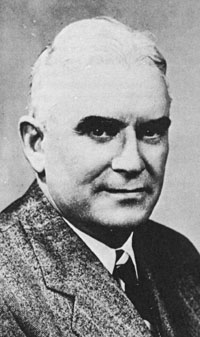
History-Politics
Colonial

From pre-history to today
Provincial

Poltics in BC History
Federal - Provincial

Byron Ingemar "Boss" Johnson served as the 24th Premier of British Columbia from 1947 to 1952, not the 16th premier as I stated earlier. He was born Björn Ingimar Jónsson on December 10, 1890 and served as Premier from 1947 to 1952. His nickname "Boss" was given to him due to his strong leadership style.
During his time as Premier, Byron Ingemar "Boss" Johnson faced several issues and challenges. Some of the notable issues of his administration include:
The labor strikes: Johnson's government had to deal with a series of labor strikes in the province, particularly in the logging and mining industries, which caused disruptions to the economy and tensions between the government and labor unions.
The Cold War: Johnson's government had to navigate the tensions of the Cold War, and deal with the potential threat of communism in the province.
The economic recession: Johnson's government had to deal with the
economic recession that occurred in the late 1940s and early 1950s, which led to high unemployment and a decline in economic activity in the province.
The housing crisis: Johnson's government had to deal with a housing crisis in the province, caused by a shortage of affordable housing and a large influx of veterans returning from World War II.
The power crisis: Johnson's government had to deal with a power crisis in the province, caused by a lack of electricity generating capacity, which led to blackouts and power shortages in the province.
Johnson's government implemented several policies and initiatives to address these issues and challenges, such as initiating the construction of the BC Hydro dam at Kinbasket Lake, building the Trans-Canada Highway, and encouraging immigration to the province. However, these issues and challenges also contributed to the loss of his government in the 1952 general election.
During his time as Premier, Byron Ingemar "Boss" Johnson's administration was marked by a number of notable events and initiatives. Some of these include:
The establishment of the British Columbia Power Commission: Johnson's government established the British Columbia Power Commission, which was responsible for the development of hydroelectric power in the province, and the construction of power dams, such as the BC Hydro dam at Kinbasket Lake.
The construction of the Trans-Canada Highway: Johnson's government initiated the construction of the Trans-Canada Highway through British Columbia, which improved transportation and access to remote areas of the province.
The formation of the British Columbia Resources Investment Corporation (BCRIC): Johnson's government established the BCRIC, which was responsible for the development of the province's natural resources, particularly in the areas of mining and forestry.
The expansion of the forest industry: Johnson's government implemented policies to expand the forest industry in the province, such as the formation of the British Columbia Forest Service, which played a vital role in the development of the forest industry.
The creation of the British Columbia Toll Highways and Bridges Authority: Johnson's government established the British Columbia Toll Highways and Bridges Authority to construct and maintain a network of toll highways in the province.
The promotion of immigration: Johnson's government promoted immigration to the province and offered incentives to settlers, particularly to rural areas, in order to boost the population and economy of the province.
The initiation of the construction of the Peace River Dam, which later became known as the W.A.C. Bennett Dam, named after his successor.
Timeline
This article will be posted shortly. British Columbiahistory.com is a visitor supported web site. Thank you for your feedback - it is appreciated.
Reference: Article by Greg Scott (Staff Historian), 2023
Tour Reviews
History Attractions
Submit Tour Suggestions
2023/Departures
Spotlight Tours
Events and anniversaries

All content and images are protected by copyright to Access History